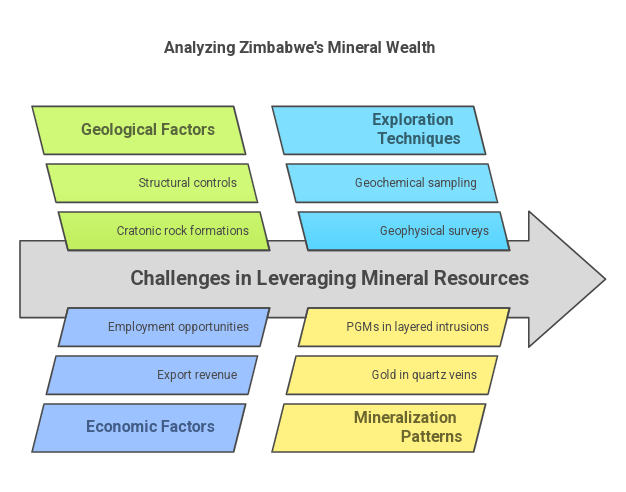
Why It Matters
- Zimbabwe’s mining sector is a cornerstone of the economy, historically producing 600,000+ ounces of gold annually (1907–1932).
- The country sits on vast untapped mineral reserves, including gold, lithium, nickel, platinum group metals (PGMs), and chrome.
- Understanding the geology and economic impact of these resources can drive investment, policy changes, and sustainable development.
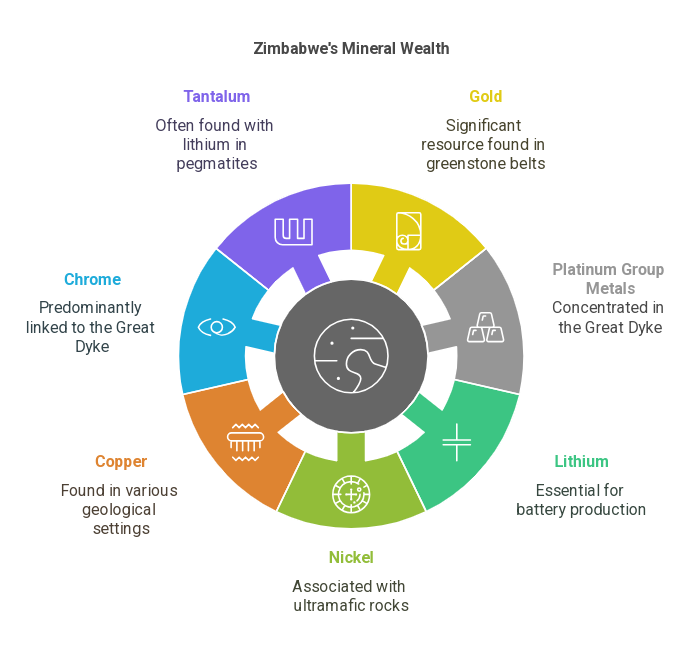
The Big Picture: Zimbabwe’s Geological Riches
Zimbabwe’s ancient cratonic rocks host some of Africa’s most valuable minerals. The country’s key geological features include:
🔹 Greenstone Belts – Home to major gold deposits (Midlands, Gweru-Shurugwi, Harare-Bindura-Shamva belts).
🔹 The Great Dyke – One of the world’s largest PGM reserves, along with chrome and nickel.
🔹 Pegmatites & Ultramafic Rocks – Contain lithium, tantalum, and copper, critical for modern technologies.
👉 Why It’s Important: These geological formations dictate mineral distribution and impact mining potential. Understanding them is key for exploration and investment decisions.
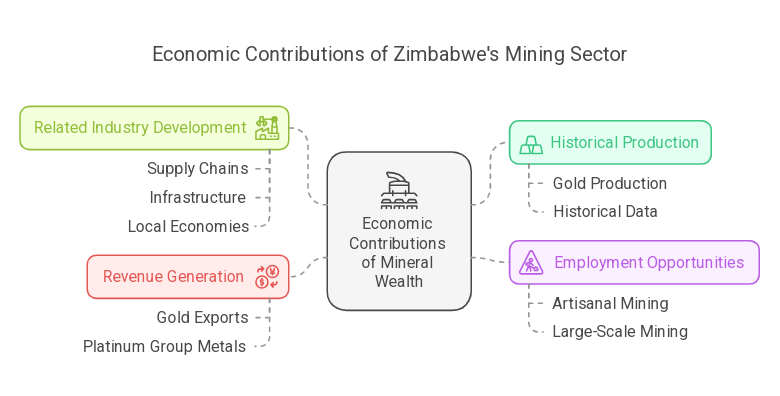
Economic Contributions: More Than Just Revenue
Mining fuels Zimbabwe’s economy through:
📈 Employment – Large-scale and artisanal mining provide thousands of jobs.
💰 Foreign Exchange – Gold, PGMs, and lithium are major export earners.
🚜 Infrastructure Growth – Mining stimulates development in transport, power, and water management.
📊 Supply Chain Growth – Equipment, logistics, and processing industries benefit.
💡 Did You Know? The Freda Rebecca and Shamva gold mines have historically been top contributors to Zimbabwe’s gold output.
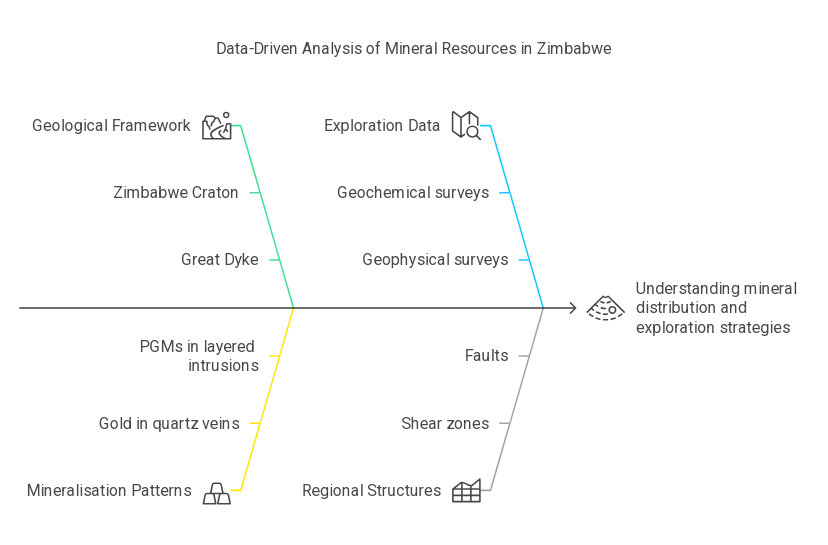
Data-Driven Insights: Where Are the Resources?
🔍 Gold – Found in quartz veins, shear zones, and Banded Iron Formations (BIFs). 🔍 PGMs & Chrome – Located in layered intrusions of the Great Dyke. 🔍 Lithium & Tantalum – Concentrated in pegmatites, often associated with granite intrusions. 🔍 Nickel & Copper – Linked to ultramafic rocks and serpentinites.
📡 Exploration Tools:
- Geophysical Surveys – Gravity and aeromagnetic data pinpoint potential mining areas.
- Geochemical Analysis – Soil and rock samples help identify mineral anomalies.
- Exclusive Prospecting Orders (EPOs) – Allow for systematic exploration by mining firms.
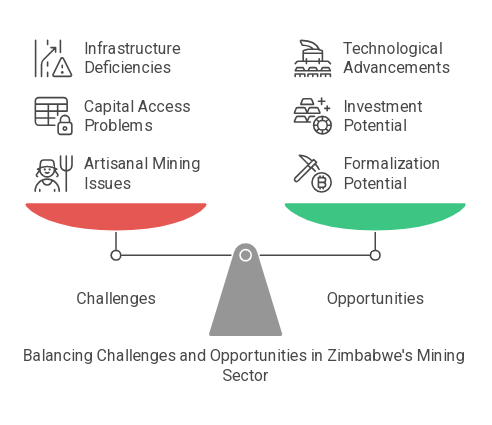
Challenges & Opportunities in Zimbabwe’s Mining Sector
🔴 Challenges:
- Artisanal Mining Risks – Safety, inefficiency, and environmental degradation.
- Access to Capital – Funding constraints for exploration and expansion.
- Regulatory Uncertainty – Changing policies hinder investment confidence.
- Infrastructure Gaps – Limited roads, power, and water access in key mining regions.
- Environmental Concerns – Land degradation and water pollution from mining activities.
🟢 Opportunities:
- Untapped Mineral Potential – Vast reserves of lithium, gold, PGMs, and rare earth elements.
- Modern Mining Tech – Automation, AI-driven exploration, and eco-friendly mining.
- Value Addition – Local processing can increase revenue and job creation.
- Formalization of Artisanal Mining – Training and financial support can improve efficiency and safety.
- Public-Private Partnerships – Joint ventures can drive innovation and growth.

Strategic Roadmap: Unlocking Zimbabwe’s Mineral Wealth
✅ Policy Reforms: Stable regulations, clear licensing, and fair taxation to attract investors. ✅ Infrastructure Investment: Roads, power, and water improvements for mining efficiency. ✅ Sustainable Mining Practices: Environmental protection and responsible resource management. ✅ Data-Driven Exploration: Leveraging geophysical and geochemical data for efficient prospecting. ✅ Investment in Local Processing: Beneficiation and refining to increase mineral value.
What’s Next?
🔹 Investors & Stakeholders: Explore Zimbabwe’s rich mining potential.
🔹 Researchers & Policymakers: Use this data to shape sustainable mining policies.
🔹 Artisanal Miners & Entrepreneurs: Discover ways to formalize and expand mining operations.
📩 Join the Conversation! What’s your take on Zimbabwe’s mineral future? Let’s discuss how we can unlock its full potential. 🚀



Comments ()